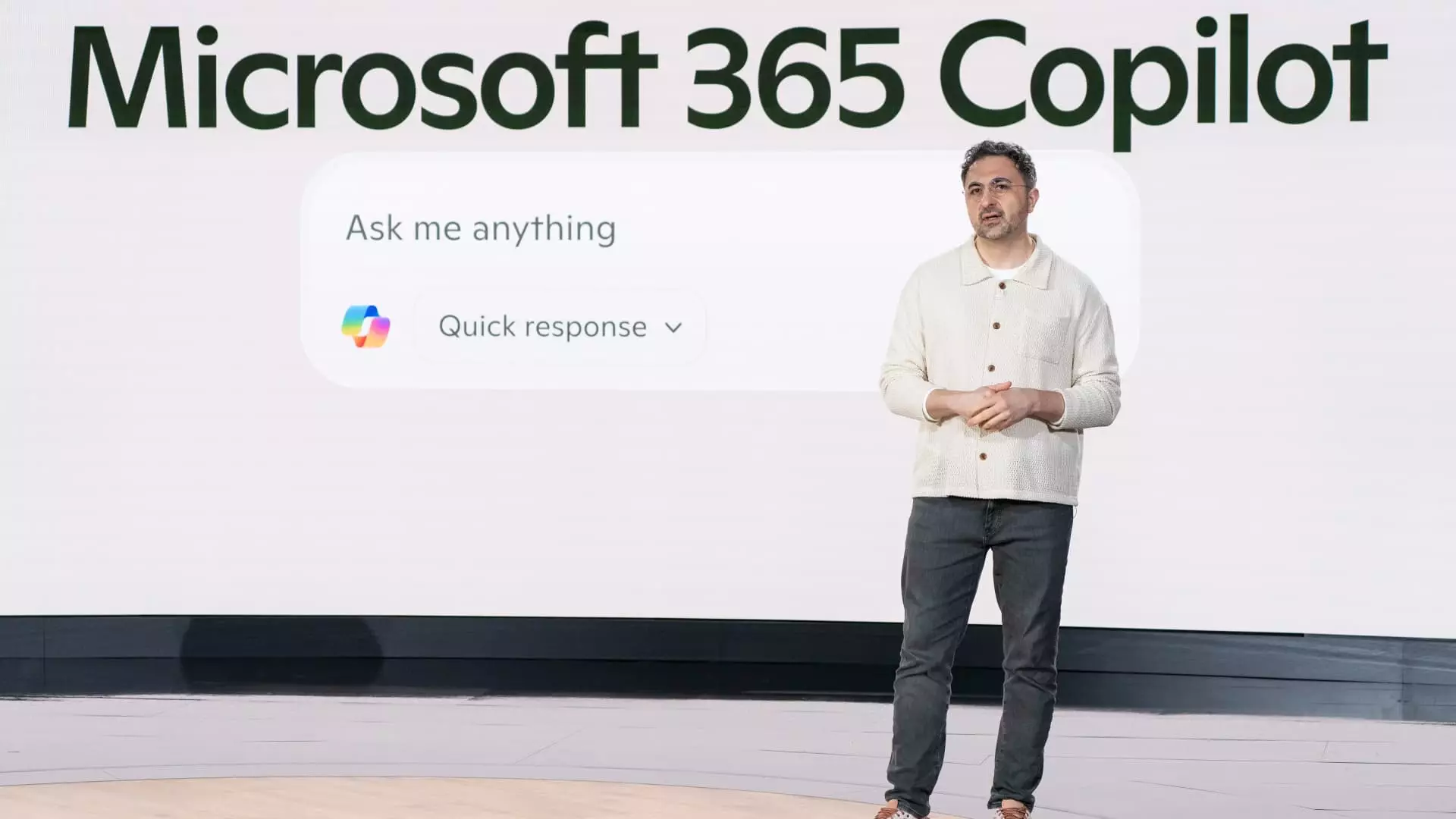In a rapidly evolving tech landscape dominated by the relentless pursuit of cutting-edge innovations, Microsoft’s approach to artificial intelligence (AI) is intriguingly counterintuitive. As one of the largest stakeholders in the realm of graphics processing units through its holdings in Nvidia, Microsoft is notably absent from the race to develop the most advanced AI models. Instead, the company, led by CEO of AI Mustafa Suleyman, is choosing a strategy of calculated delay. This decision might seem perplexing at first, but upon deeper examination, it reveals a profound understanding of market dynamics and resource allocation.
Strategic Delay: A Rational Choice
Suleyman, with his rich background from co-founding DeepMind, argues that playing catch-up in AI development could actually yield more significant benefits. This assertion is not merely a defensive stance but rather a thoughtful acknowledgment of the costs associated with pursuing first-mover advantages in a field where models become increasingly complex and resource-intensive. By opting to wait three to six months to analyze the market’s first iterations, Microsoft can refine its focus and invest judiciously. This approach allows the company to concentrate on niche applications, thus increasing efficiency and reducing unnecessary expenditure.
This logic aligns with the growing sentiment in the tech community: in a field swamped by initial hype and rapid iterations, it is often the latecomers who leverage existing models and lessons learned to produce strikingly effective solutions. By analyzing and building upon the early offerings, Microsoft can tailor its technology to meet specific user needs without overstretching its resources.
The Dependence on Partnerships and Collaboration
Moreover, in the landscape of AI development, relationships hold immense importance. Microsoft has strategically aligned itself with trailblazers like OpenAI and CoreWeave, ensuring that while it may not be at the forefront of AI model creation, it still has ample access to groundbreaking technologies. This interconnectedness signifies a shift in the paradigm of competitive advantage. No longer is it solely about who holds the best technology but rather who can effectively integrate and optimize existing capabilities through strategic collaborations.
Suleyman’s comments emphasize the importance of these relationships, and the symbiotic nature of Microsoft’s position. By leveraging OpenAI’s expertise and solutions for language models and image generation, Microsoft expands its portfolio without bearing the brunt of initial innovation costs or risks. This creates a substantial buffer allowing them to maintain leadership while minimizing their exposure to the trial and error essential in pioneering untested frontiers.
Future Investments: Balancing Internal Development with Collaboration
Looking ahead, the commitment to internal development remains vital for Microsoft. Suleyman highlights this imperative stating that achieving long-term operational independence in AI is mission-critical. While current alliances remain beneficial, Microsoft is also investing in building a robust in-house AI team equipped to compete within the next decade. This mix of internal strength coupled with strategic partnerships positions Microsoft uniquely in the AI domain.
Interestingly, despite the observable tensions between Microsoft and OpenAI, with hints of competition surfacing, Suleyman maintains that these are part of an evolving relationship that is crucial for long-term success. The acknowledgment of rival dynamics does not undermine their existing collaboration but rather enhances Microsoft’s strategic outlook on capitalizing on AI.
Final Thoughts on Microsoft’s Future in AI
As the AI landscape continues to shift, with new players and technologies emerging at breakneck speeds, Microsoft’s decision to embrace a strategic delay is both controversial and pragmatic. While there may be a temptation to jump on the AI bandwagon at every turn, Suleyman’s rationale for a more subdued approach highlights an acute understanding of economic principles at play in innovation. The wealth of resources and collaborations at Microsoft’s disposal creates a uniquely resilient strategy that could very well place them in a commanding position in the coming years.
Taking a measured approach in the face of exuberance may just be the winning play for a company like Microsoft, adeptly straddling the line between innovation and realism.


Leave a Reply